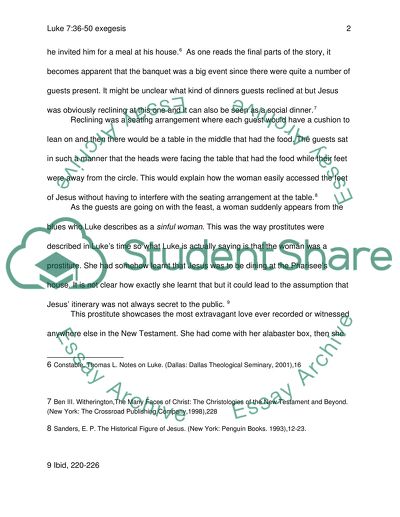Cite this document
(“An Exegesis of Luke 7:36-50 Essay Example | Topics and Well Written Essays - 1500 words”, n.d.)
Retrieved from https://studentshare.org/religion-and-theology/1472711-write-an-exegesis-on-the-following-passage-luke
Retrieved from https://studentshare.org/religion-and-theology/1472711-write-an-exegesis-on-the-following-passage-luke
(An Exegesis of Luke 7:36-50 Essay Example | Topics and Well Written Essays - 1500 Words)
https://studentshare.org/religion-and-theology/1472711-write-an-exegesis-on-the-following-passage-luke.
https://studentshare.org/religion-and-theology/1472711-write-an-exegesis-on-the-following-passage-luke.
“An Exegesis of Luke 7:36-50 Essay Example | Topics and Well Written Essays - 1500 Words”, n.d. https://studentshare.org/religion-and-theology/1472711-write-an-exegesis-on-the-following-passage-luke.


